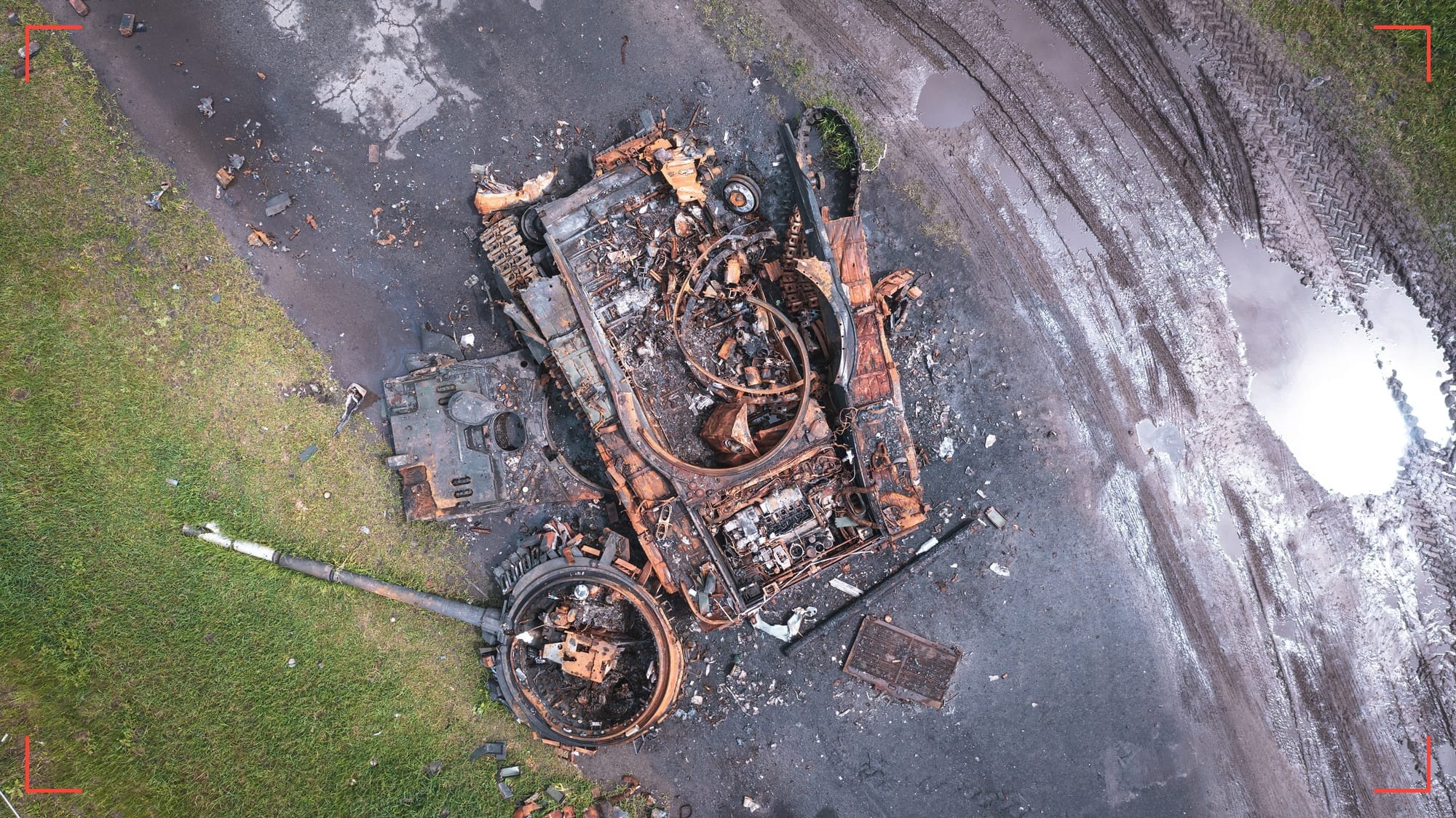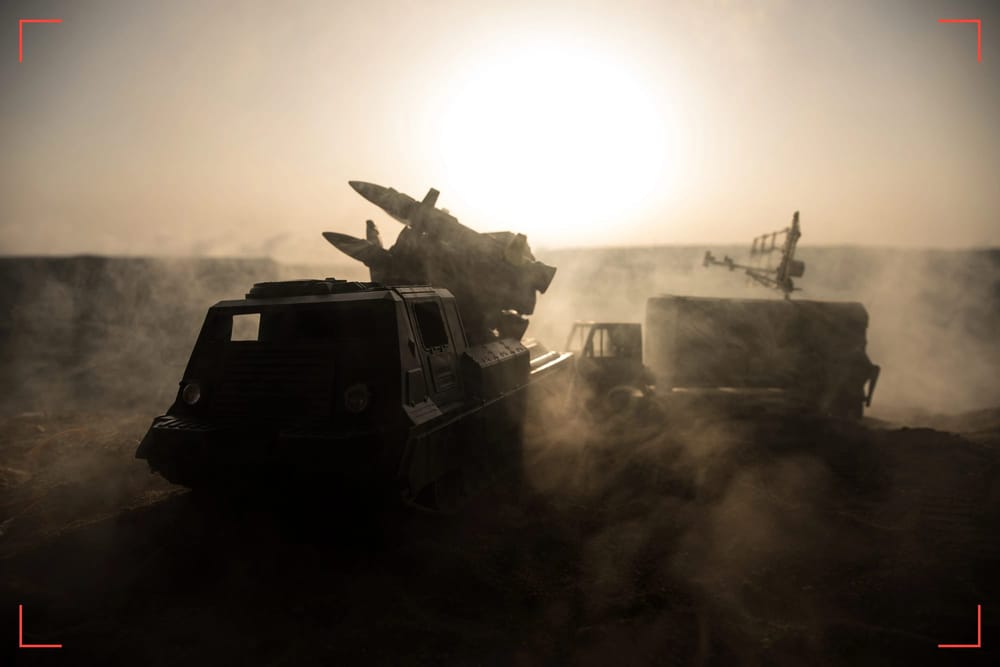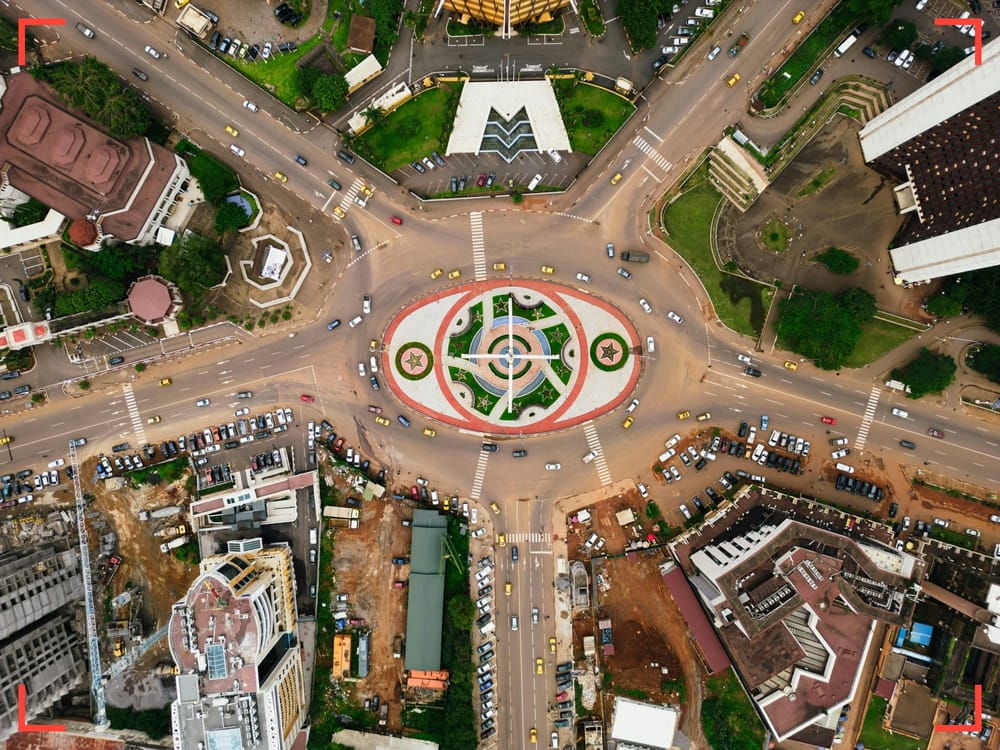President Trump's 28-Point Ukraine Framework: FLASH Assessment
Strategic, Humanitarian, and Geopolitical Implications in Historical Context

Report Details
Initial Publish Date
Last Updated: 24 NOV 2025
Report Focus Location: Ukraine-Russia
Authors: ZK, NA
Contributors: GSAT
GSAT Lead: MF
RileySENTINEL provides timely intelligence and in-depth analysis for complex environments. Our global team blends international reach with local expertise, offering unique insights to navigate challenging operations. For custom insights or urgent consultations, contact us here.
Executive Summary
This flash report offers a critical analysis of the 28‑point peace proposal presented in 2025 by U.S. and Russian officials, with alleged backing from the U.S. President Donald Trump. We examine the proposal’s strategic dimensions (military and security), humanitarian consequences, and geopolitical ramifications. We also assess its strengths and weaknesses, situating it within the broader history of Russia’s repeated violations of international agreements with Ukraine. The analysis argues that while the plan offers a formal ceasefire and reconstruction pathway, it imposes severe concessions on Ukraine that risk undermining its sovereignty and long-term security, and draws attention to the inherent risk posed by Russia’s historical pattern of breaking commitments.
Introduction
The war in Ukraine, which began in 2014 and escalated drastically with Russia’s full-scale invasion in 2022, has become one of the most consequential geopolitical crises of the 21st century. Amid the intense fighting, a controversial 28‑point peace plan emerged in 2025, reportedly negotiated between U.S. and Russian officials with the tacit approval of U.S. President Donald Trump.
The plan has provoked strong reactions: for Kyiv, many of the terms appear to demand unacceptable concessions, while Moscow and some in the West present it as a pathway to ending the war.
This report provides a deep dive into the 28‑point proposal, exploring:
- The content and key provisions of the plan;
- Strategic (security and military) implications;
- Humanitarian implications;
- Geopolitical implications;
- Pros and cons of the agreement;
- Historical precedent and Russia’s track record on treaty compliance;
- Risks and long-term viability of the deal;
- Conclusion and recommendations.
Content and Key Provisions of the 28‑Point Plan
Using publicly reported sources, the 28‑point plan includes the following major elements (summarized)
- Ceasefire: A ceasefire would take effect immediately once the agreement is signed, with both sides withdrawing to defined “agreed points.”
- Territorial Provisions:
- Crimea, Luhansk, and Donetsk would be recognized as de facto Russian by the U.S. and other parties.
- In Donetsk, Ukrainian forces would withdraw from parts they currently control; that withdrawal zone would become a neutral demilitarized buffer, internationally recognized as Russian territory, but with no Russian troops present.
- The front lines in Kherson and Zaporizhzhia oblasts would be “frozen” along current lines of contact.
- Security Guarantees:
- Ukraine’s armed forces would be limited to 600,000 personnel, a significant reduction.
- Ukraine would enshrine non‑NATO membership in its constitution, and NATO would agree not to admit Ukraine in the future.
- NATO troops would be prohibited from being stationed in Ukraine.
- As compensation or guarantee, European fighter jets would be stationed in Poland to help guarantee Ukrainian security.
- The United States would provide some form of “security guarantee,” though the nature is vague. Under certain conditions (e.g., if Ukraine attacks Russia), guarantees could be voided.
- Reconstruction / Economic Terms:
- $100 billion of frozen Russian assets would be allocated to reconstruct Ukraine.
- Part of the remaining frozen assets would be used to create a U.S.-Russian investment vehicle, aimed at joint projects.
- Russia would be reintegrated economically: the plan proposes restoring Russia to the G8.
- Nuclear / Arms Control:
- Ukraine would remain a non-nuclear state, reaffirming its status in line with the Non‑Proliferation Treaty (NPT).
- Russia and the U.S. would agree to extend arms-control treaties.
- Zaporizhzhia Nuclear Power Plant (ZNPP):
- The ZNPP would operate under IAEA supervision, and electricity produced would be split evenly (50/50) between Russia and Ukraine.
- Humanitarian Provisions:
- A “humanitarian committee” would be established: all prisoners, civilian detainees, hostages (including children), and bodies would be exchanged “all-for-all.”
- Family reunification programs would operate, and measures to address civilian suffering would be introduced.
- Political / Constitutional:
- Ukraine would hold elections within 100 days of signing.
- Amnesty: The plan proposes full amnesty for all parties involved in the war; no future claims or complaints related to wartime actions.
- Institutional Guarantees:
- A Peace Council, headed by the U.S. President Donald Trump, would monitor implementation. Violations would lead to predetermined sanctions.
- Other Security / Cooperation:
- A joint U.S.-Russian working group on security issues.
- Guarantees on Ukraine’s use of the Dnipro River for commercial purposes; free transport of grain across the Black Sea.
Strategic Implications
Military / Security
- Force Reduction Risk: Limiting Ukraine’s army to 600,000 personnel represents a significant strategic risk: reduced manpower and potentially reduced capacity to defend or deter renewed aggression.
- Neutrality & Non‑NATO Status: Enshrining non‑NATO membership constitutionally could leave Ukraine vulnerable, especially given that NATO troops would be banned from its territory.
- Buffer Zone Vulnerability: The demilitarized buffer zone in Donetsk is particularly risky; although Russia reportedly would not station troops there, the formal recognition of that zone as Russian territory may give Moscow leverage or a foothold.
- Enforceability Issues: While the plan provides for a ceasefire and guarantees, the effectiveness hinges on the Peace Council (led by Trump) and the sanction mechanism. The credibility and capacity of these enforcement tools remain unclear.
- Nuclear / Arms Control: Extending arms control may provide longer-term stability, but unless verifiable monitoring is robust, there’s a danger of future violations.
Deterrence and Credibility
- Deterrent Credibility of Guarantees: The plan promises “reinstatement of sanctions” and “decisive coordinated military response” if Russia violates again. However, historical precedent raises serious doubts about whether these guarantees will be credible or timely in a future crisis.
- Russia’s Reintegration: Re-admitting Russia to the G8 and investing in joint projects might reduce its insulation and give it renewed global legitimacy — but this could embolden it if its actions are not strictly tied to compliance.
Humanitarian Implications
- Prisoner Exchanges and Hostages: The all-for-all exchange is a positive humanitarian measure and could lead to the return of children, women, and civilian detainees.
- Family Reunification: Programs to reunite families could address some of the trauma caused by displacement, captivity, and separation.
- Amnesty Risks: The blanket amnesty (Point 26) means that potential war crimes or crimes against humanity committed during the war may go unpunished.
- Justice vs. Peace Trade-Off: Forgoing claims and waiving future claims could undermine justice for victims, including deported children, executions, civilian suffering. Critics argue that this could “shut the door” on accountability.
- Reconstruction Aid: The injection of $100 billion into reconstruction could significantly alleviate suffering from infrastructure devastation, but success depends on how effectively funds are managed and whether they reach areas most in need.
Geopolitical Implications
For Ukraine
- Loss of Territorial Sovereignty: Recognizing Russian control over Crimea, Luhansk, and Donetsk (or large parts thereof) is a major concession, potentially altering Ukraine’s geography permanently.
- Western Alignment Shift: A forced neutrality could reorient Ukraine’s international alignment, limiting its future Western security integration.
- Domestic Stability: Holding elections soon after the agreement could lead to political volatility. Depending on election outcomes, constitutional changes (e.g., neutrality) might be deeply contested.
For Russia
- Legitimization of Gains: The plan essentially legitimizes Russia’s territorial gains, offering it a diplomatic victory and formal recognition from the U.S. and possibly others.
- Economic Reintegration: Rejoining the G8 and a joint investment vehicle could help Russia re-enter global economic structures, potentially reducing isolation and sanctions pressure.
- Strategic Leverage: With formal recognition and a neutral Ukraine, Russia may gain long-term strategic depth, weakening NATO's influence and expanding its sphere.
For the West (U.S., NATO, EU)
- Credibility of Security Guarantees: If the U.S. guarantees fail, the West’s credibility for future security guarantees may suffer.
- Precedent for Other Conflicts: Accepting a deal that rewards aggression could set a precedent for other states with territorial ambitions.
- Internal Western Fractures: European allies may resist a deal that they see as capitulating to Moscow. There may be divisions over reconstruction investment, enforcement mechanisms, and the role of NATO.
Pros and Cons (Risks and Benefits)
Benefits
- Ceasefire Potential: Immediate risk reduction; cessation of hostilities would relieve civilian suffering.
- Humanitarian Gains: Prisoner exchanges, family reunifications, infrastructure reconstruction.
- Economic Reconstruction: Significant funds mobilized for rebuilding Ukraine, potentially accelerating recovery.
- Arms Control Reset: Potential revival of arms control processes and stability mechanisms.
- Russia Accountability Mechanism: A Peace Council with enforcement and sanctions may provide a framework for monitoring.
Risks
- Territorial Loss: Recognition of Russian control over parts of Ukraine weakens Ukraine’s sovereignty.
- Security Vulnerability: Military downsizing and neutrality could undermine long-term defense and deterrence capabilities.
- Enforcement Doubts: Guarantees and sanctions may not be credible or fast enough if Russia violates again.
- Justice Sacrifice: Amnesty removes accountability for war crimes; victims may be denied justice.
- Moral & Political Cost: Concessions may be seen domestically (and internationally) as capitulation; potential political backlash.
- Trust Deficit: Given Russia’s track record as noted more thoroughly here, here and here, there’s a serious risk, unless sufficient controls are applied, that it will not honor its commitments.
Historical Context and Russia’s Record on Treaty Compliance
To assess the risks, it's vital to examine Russia’s past behavior with treaties and agreements with Ukraine.
Key Treaty Violations
- Budapest Memorandum (1994): Under this memorandum, Russia (and others) committed to respecting Ukraine’s independence and existing borders in exchange for Ukraine giving up its nuclear arsenal. However, Russia later annexed Crimea (2014), violating the agreement.
- Treaty on Friendship, Cooperation, and Partnership (1997) (“Big Treaty”): This treaty recognized Ukraine’s territorial integrity and mutual non-aggression. Russia’s annexation of parts of Ukraine breached it.
- Kharkiv Pact (2010): Russia extended its lease on bases in Crimea under this pact; in 2014, after the annexation of Crimea, Russia unilaterally denounced parts of these agreements.
- Minsk Agreements: Both Minsk I (2014) and Minsk II (2015) ceasefire agreements were frequently violated by Russia.
- Other Violations: According to Ukrainian officials, Russia has ignored dozens of international documents since 2022 and violated over 400 agreements since 2014.
Implications of Historical Behavior
- Trust Deficit: Russia’s repeated non-compliance undermines trust, which raises major doubts about whether it would stick to the 28-point plan.
- Legal Validity: Some experts argue that any agreement coerced under threat of force (i.e., Russia’s military pressure) may be invalid under international law.
- Precedent Risk: Historical patterns suggest that Russia may use agreements diplomatically to pause fighting, regroup, and then resume hostilities — rather than make a genuine commitment to peace.
Long-Term Risks and Viability
Given the strategic, humanitarian, and geopolitical stakes — combined with historical evidence — the 28-point plan carries several long-term risks:
- Relapse into Conflict: Without strong, enforceable mechanisms, a ceasefire could collapse, leading to renewed fighting under worse conditions (with Ukraine weakened).
- Entrenchment of Russian Gains: Recognizing Russian control over key territories may give Moscow a de facto permanent foothold, challenging Ukraine’s future sovereignty claims.
- Erosion of Western Guarantees: If enforcement fails, it may undermine Western credibility in future security guarantees to other states.
- Domestic Political Instability: Imposed amnesty and territorial concessions may fuel domestic divisions, undermine national cohesion, and provoke political backlash in Ukraine.
- Justice vs. Stability Trade-Off: The plan’s amnesty may leave thousands of victims without redress, weakening the rule of law.
EU Proposal
Full 24 Points of the EU Peace Plan.
- End of War & Lasting Peace
- After the conflict, mechanisms must be established to ensure lasting peace and security.
- Unconditional Ceasefire
- Both sides commit to a full, unconditional ceasefire on land, at sea, and in the air.
- Ceasefire Monitoring Negotiations
- Immediately enter negotiations on the technical implementation of ceasefire monitoring, involving the US and European countries.
- International Monitoring Mission
- Introduce a US-led international monitoring mission for the ceasefire. Monitoring will be primarily remote (satellites, drones, other tech), but with a flexible on-the-ground component to investigate alleged violations.
- Violation Reporting Mechanism
- Create a mechanism for reporting ceasefire violations; investigate them and discuss corrective actions.
- Return of Ukrainian Children
- Russia to unconditionally return all deported or illegally displaced Ukrainian children; the process will be overseen by international partners.
- Prisoner Exchange
- Exchange of all prisoners of war on an “all-for-all” basis; Russia to release all detained civilians.
- Humanitarian Confidence-Building
- Once the ceasefire is confirmed as stable, both sides take humanitarian measures, including family visits across the contact line.
- Respect for Ukraine’s Sovereignty
- Ukraine’s sovereignty is respected and reaffirmed; it is not forced into neutrality.
- Legally Binding Security Guarantees
- Ukraine receives strong, legally binding security guarantees, including from the U.S., akin to NATO’s Article 5.
- No Restrictions on Ukrainian Military
- No limits are placed on the size of Ukraine’s armed forces or its defense industry; international cooperation is allowed.
- Guarantor States
- A group of guarantor states will be formed: some European, and possibly non-European ones willing to join.
- Friendly Forces on Ukrainian Soil
- Ukraine independently decides on the presence, armament, and operations of “friendly forces” invited by its government.
- NATO Membership
- Ukraine’s NATO membership depends on consensus within the Alliance (no forced ban).
- EU Membership
- Ukraine would become a member of the European Union.
- Non-Nuclear Status
- Ukraine remains a non-nuclear state under the Nuclear Non-Proliferation Treaty (NPT).
- Territorial Negotiations After Ceasefire
- Territorial issues will be discussed only after a full and unconditional ceasefire is in place.
- Using Current Frontline as Base
- Territorial negotiations would start from the current line of control.
- No Changing Borders by Force
- Once an agreement on territory is reached, both sides pledge not to change it by force.
- Control of Key Infrastructure
- Ukraine regains control over the Zaporizhzhia Nuclear Power Plant (with US involvement) and the Kakhovka Dam. A mechanism for transfer of control will be set up.
- Free Passage & Territorial Control
- Ukraine gets unimpeded passage along the Dnipro River and control over the Kinburn Spit.
- Economic Cooperation
- Unrestricted economic cooperation between Ukraine and its partners.
- Reconstruction & Compensation
- Full restoration of Ukraine; financial compensation, including from frozen Russian sovereign assets, which stay frozen until Russia compensates for the damage.
- Sanctions & Security Architecture
- Sanctions on Russia since 2014 may be partially / gradually eased after sustainable peace is achieved. But there’s a “snap-back” mechanism: sanctions can be reimposed automatically if the agreement is violated.
- Launch separate negotiations on a new European security architecture including all OSCE states.
EU Plan Conclusion
The EU plan text outlines key challenges and risks surrounding a proposed plan for resolving the conflict involving Ukraine and Russia. It highlights that many core demands of the plan, like reparations and full control of infrastructure, are likely to be unacceptable to Russia, which analysts believe will strongly resist these points. Even if Russia signs the agreement, enforcing it, particularly concerning territorial issues, may prove challenging.
Verification of compliance with the plan requires strong institutions and political will, as remote monitoring alone may not suffice. While some funds may come from frozen Russian assets, the process of accessing these could be lengthy. There are significant reconstruction costs for Ukraine, and obtaining timely financial support will be complex. The risk of a snapback of sanctions presents additional problems, as any easing of sanctions could discourage adherence to the agreement and face political backlash, especially if some European countries seek to normalize relations with Russia.
The effectiveness of security guarantees hinges on the commitment of European states, and establishing a reliable "guarantor group" poses difficulties regarding participation and military obligations. Negotiations over territory post-ceasefire may take time, and there is a risk that these discussions could be manipulated. Political unity among EU member states is also a concern, as differing views on financial burdens and military commitment may arise.
Ukrainians may oppose any deal seen as compromising their core principles. The potential for high-pressure negotiations could lead to suboptimal compromises affecting enforcement. Despite a reasonable chance for a ceasefire, especially with robust monitoring, the risk of fragility remains. The plan has potential strengths, but without sustained pressure and political commitment, it may only serve as a diplomatic statement, rather than a viable treaty.
The best-case scenario, with a 15-25% plausibility, involves a negotiated ceasefire leading to a managed settlement. This could happen within 1-2 months if Russia agrees to a deal, backed by strong political pressure from the EU and the US, and effective monitoring mechanisms. This could establish a stable ceasefire, allow for territory talks, and channel frozen Russian assets to reconstruction under strict oversight.
The middle path scenario has a 40-50% probability and features a partial ceasefire alongside ongoing negotiations. Temporary ceasefires could occur within weeks, though violations may persist. This would involve some limited confidence-building measures while delaying territorial issues. Reconstruction efforts would begin but with slow progress and sanctions debates.
A low-probability optimistic outcome (10-15% plausibility) could see a quick ceasefire followed by strong security guarantees, contingent on significant external pressure on Russia. Here, reconstruction could accelerate with the use of frozen assets, although this depends on an unlikely combination of events and international unity.
The failure or stall scenario (20-35% plausibility) sees talks quickly break down, leading to continued fighting and humanitarian issues. If Russia rejects key elements or there’s disagreement among Western allies, the situation could deteriorate into prolonged conflict.
Key uncertainties influencing these outcomes include Russia's willingness to engage, the credibility of enforcement mechanisms, Western unity, and monitoring capacities. Recommendations include setting clear verification terms, harmonizing political positions among allies, and ensuring proportional concessions from Ukraine. The success of the EU’s 24-point plan hinges on enforcement credibility, unity among supporters, and Russia's acceptance of binding verification.
Conclusion and Recommendations
Conclusion
The 28‑point peace plan, as currently understood, represents a high-risk diplomatic gamble. While it offers tangible humanitarian benefits and a formal cessation of hostilities, it demands severe concessions from Ukraine — territorial recognition of Russian control, a capped military, constitutional neutrality, and a blanket amnesty. These terms shift the balance heavily in Russia’s favor and expose Ukraine to long-term strategic vulnerability. Historically, Russia’s pattern of treaty violations intensifies these concerns. The enduring trust deficit, fragile enforcement mechanisms, and moral costs associated with amnesty cast doubt on the plan’s viability as a foundation for a sustainable peace.
Recommendations
- Robust Monitoring and Enforcement: Any agreement should be backed by strong, independent verification mechanisms (e.g., under the UN or OSCE) with clear and immediate sanctions for violations.
- Conditionality on Reconstruction Funds: Reconstruction funds should be disbursed in tranches, contingent on verified compliance, to prevent misuse and reduce risk of re-militarization.
- Transitional Justice Mechanisms: Rather than blanket amnesty, consider hybrid models (truth and reconciliation commissions, limited amnesties) that balance peace and accountability.
- Constitutional Safeguards: Constitutional changes (like neutrality) should be subject to broad domestic legitimacy — for example, through a referendum.
- Long-Term Security Guarantees: Develop a credible, multilateral security guarantee framework involving not only the U.S. but European partners, anchored in legally binding treaties, not merely political promises.
- Phased Implementation: Implement the deal in phases (ceasefire, withdrawal, reconstruction, arms control), allowing for confidence building and verification at each stage.
Summary Sources
The following is a summary of publicly available sources consulted for this report. This list is not exhaustive and does not include proprietary analysis or confidential sources.
- Axios: Trump's full 28-point Ukraine-Russia peace plan
- CNN: Trump’s 28-point peace proposal for Ukraine would require land concessions and military reduction
- CBS News: Here's what's in the Trump administration's proposed 28-point Russia-Ukraine peace plan."
- Al Jazeera: Trump's 28-point Ukraine plan in full: What it means, could it work?
- AP/Military: Key Elements in Trump's 28-Point Peace Proposal and Why Much of it is Unacceptable for Ukraine.
EU Counter-Proposal
- The Telegraph: Europe's 24-point peace plan for Ukraine.
- Ukraine Today: Europe's full peace plan for Ukraine: The Telegraph has published all 24 points.
Russian Treaty Compliance Record
- The Dispatch: Edelman, Eric S. and Franklin C. Miller. Russia's Long Record of Broken Pledges and Treaty Violations.
- NPR: Russia's history of broken agreements with Ukraine. Interview with Harvard historian Serhii Plokhii.
- U.S. Department of State: U.S. Countermeasures in Response to Russia's Violations of the New START Treaty.
- Arms Control Association: Russia Breaches INF Treaty
- UNITED24 Media: Peace agreements violated by Russia: A history of broken agreements.
Official Statements & Government Records
- U.S. Senate Committee on Foreign Relations: Russian Violations of Borders, Treaties, and Human Rights. Hearing Record.
- Ukrinform: President Zelensky: Russia violated about 400 international treaties since 2014.
Ongoing Developments
This situation remains highly fluid and is evolving rapidly. While President Trump has clearly attempted to pressure all parties toward an accelerated timeline, it remains to be seen how negotiations and ongoing communications between the United States, Ukraine, Russia, and European stakeholders will progress.
Riley Risk clients should anticipate significant developments in the coming days and weeks that may alter the analysis contained in this report. The Riley Risk GSAT will continue to monitor and provide updates as warranted.
Ongoing Development Sources
- NBC News: Trump says Ukraine peace plan isn't his 'final offer.'
- CBS News: Western leaders say U.S. 28-point Ukraine peace plan needs 'additional work.
- Axios: How Trump's 28-point plan for Ukraine shocked the world.
RileySENTINEL
Our RileySENTINEL platform delivers comprehensive global, regional, and country-specific situation reporting and analysis. Powered by the Riley Risk team, our Geopolitical & Security Analysis experts provide:
- Timely, on-the-ground intelligence
- In-depth analysis of high-risk environments and events
- Proactive insights to navigate volatile operational contexts
Our globally distributed advisors and analysts combine global reach with regional expertise and local insights, empowering clients with unique perspectives to make informed decisions in challenging environments.
Enhance Your Risk Management Strategy
For deeper insights or enhanced custom reporting tailored to your specific needs, we offer on-demand consultations. An expedited response option is typically available, based on our team and advisor availability.
To explore how our risk advisory services can strengthen your business operations and help you achieve more, schedule a call with the RileySENTINEL team using the service booking link below.
Expert Analysis On-Demand: Request Support
Leverage RileySENTINEL's expert team for deeper analysis and tailored insights:
- On-demand consultations with our global network of advisors
- Custom reports focused on your specific operational contexts
- Proactive risk mitigation strategies for volatile environments
- In-depth analysis of regional stability factors and future outlooks
- Expedited response options for time-sensitive inquiries
Click this link to be redirected to the support request page.
RileySENTINEL: Global Insights. Local Expertise.





